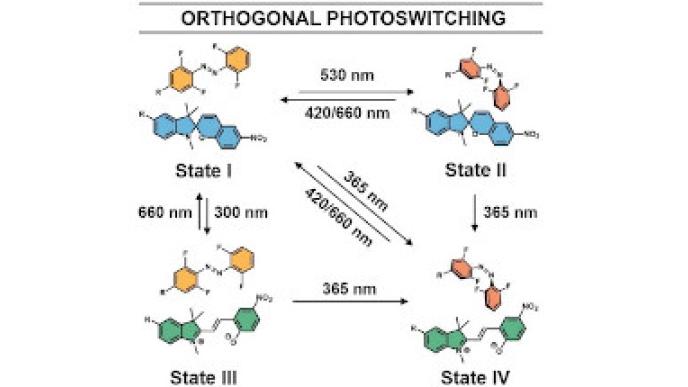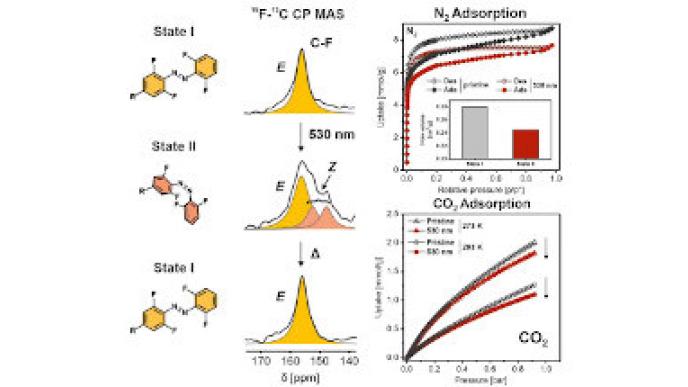The development of photoresponsive systems with non‐invasive orthogonal control by distinct wavelengths of light is still in its infancy. In particular, the design of photochemically triggered‐orthogonal systems integrated into solid materials, that enable multiple dynamic control over their properties, remains a longstanding challenge. In the research project carried out by Angiolina Comotti , Jacopo Perego and Silvia Bracco, researchers at the Department of Materials Science of the University of Milano-Bicocca, in collaboration with Nobel Prize Nobel Prof. Ben Feringa, orthogonal and reversible control of two types of photoswitches in an integrated solid porous framework, that is, visible‐light responsive o‐fluoroazobenzene and nitro‐spiropyran motifs. The properties of the constructed material can be selectively controlled by different wavelengths of light thus generating four distinct states, providing a basis for dynamic multifunctional materials.
Prof.ssa Silvia Bracco highlighted the strategic role of Solid State NMR to demonstrate the on command selective photoisomerization of the azobenzene switch in the bulk, which in turn modulates the N2 and CO2 adsorption in the porous polymeric material through light manipulation.
This achievement represents a significant advancement in the field of light-responsive materials and paves the way for the development of more sophisticated and versatile smart materials with multiple controllable states. Furthermore, the combination of these two switches can be extended to other scaffolds including liquid crystals, gels, and block copolymers.
The results of the research have reported in the paper “Orthogonal Photoswitching in a Porous Organic Framework” (DOI: 10.1002/anie.202404878) recently published on Angewandte Chemie Int. Ed. come Hot Paper (Impact Factor 16.6, 2022 Journal Impact Factor, Journal Citation Reports (Clarivate Analytics, 2023)).
The paper has been published under the CC BY 4.0 DEED license

